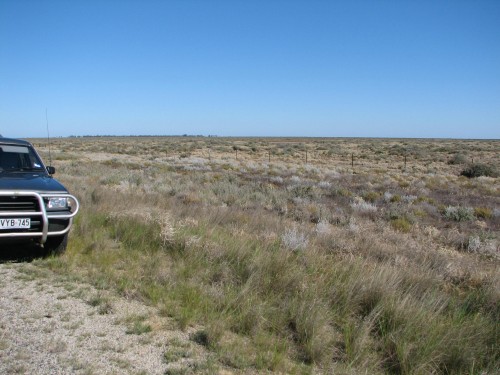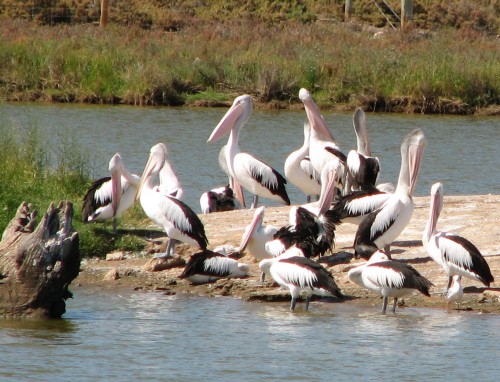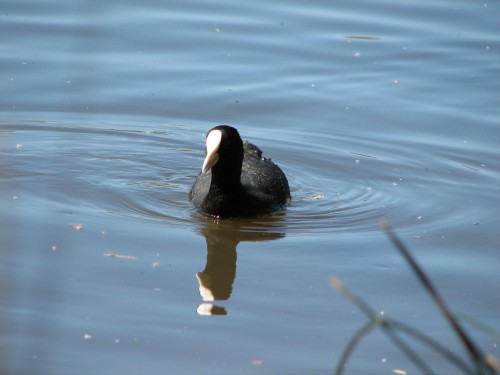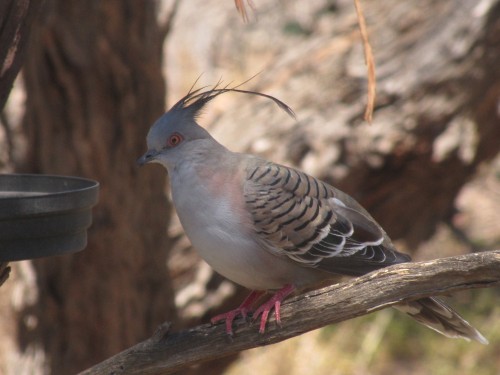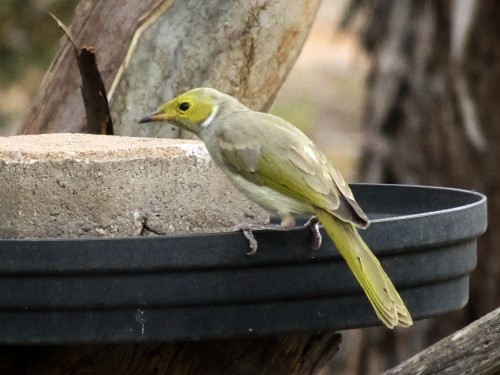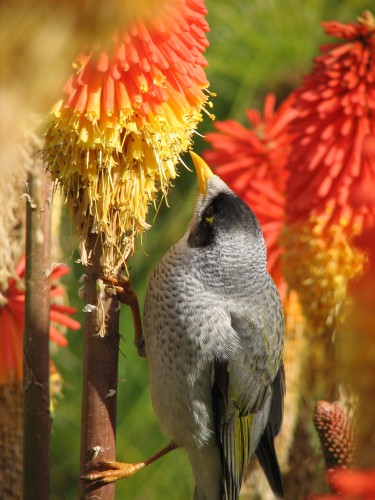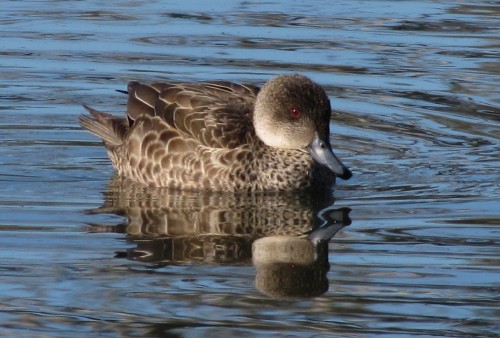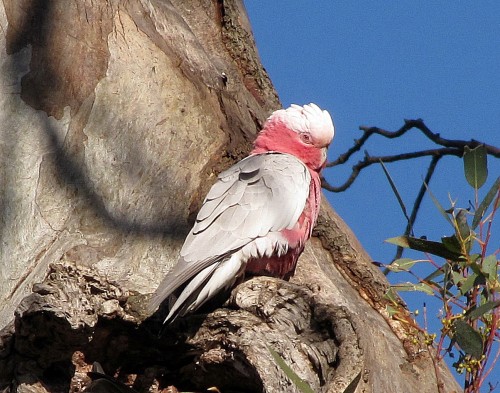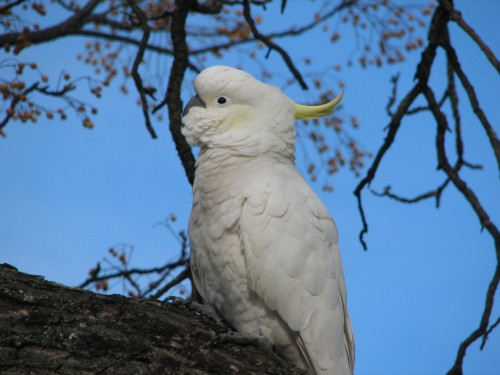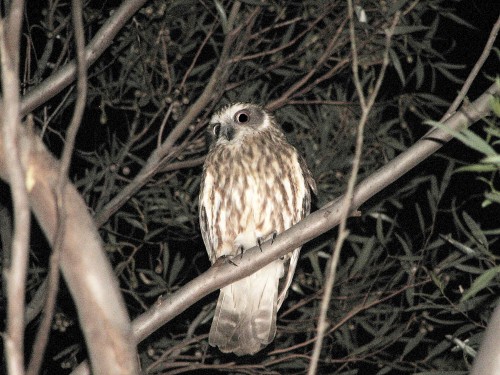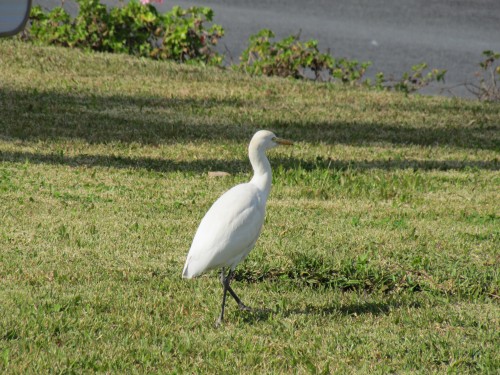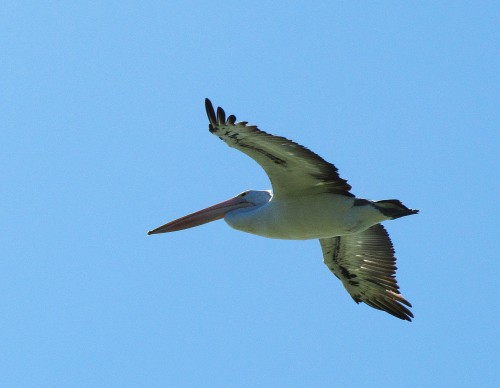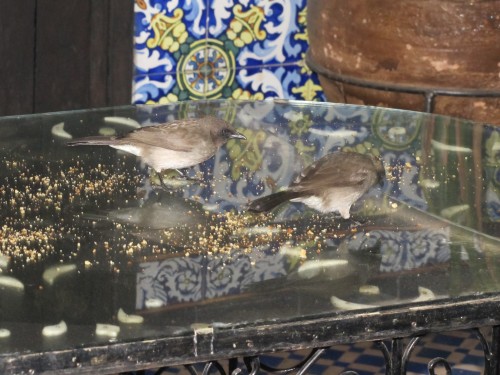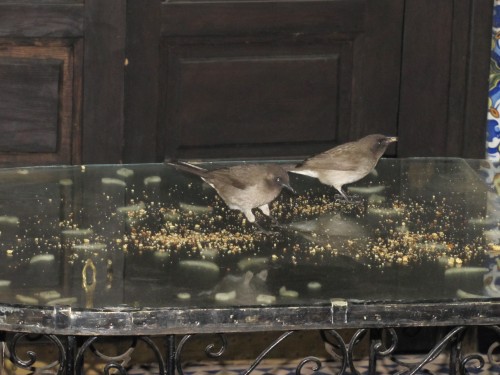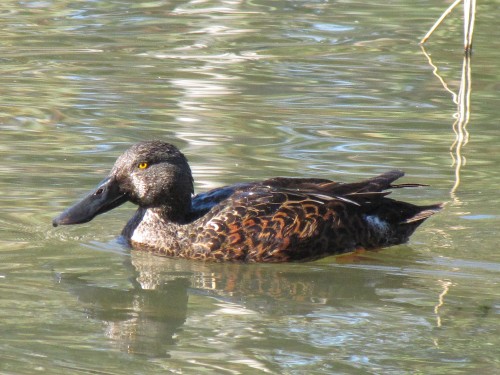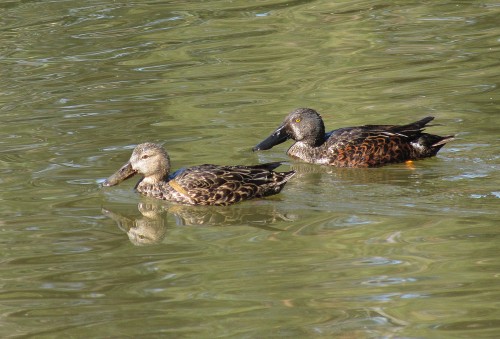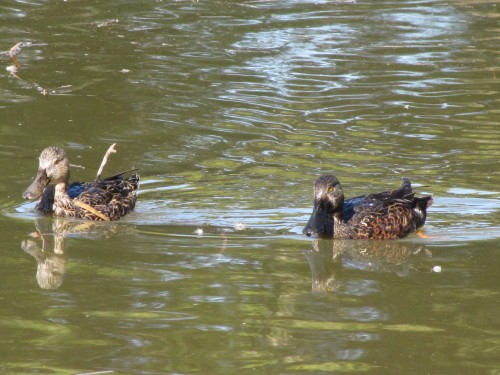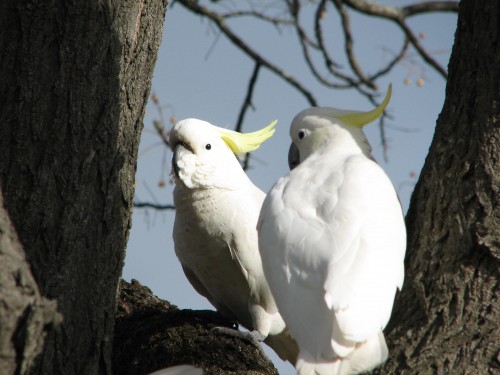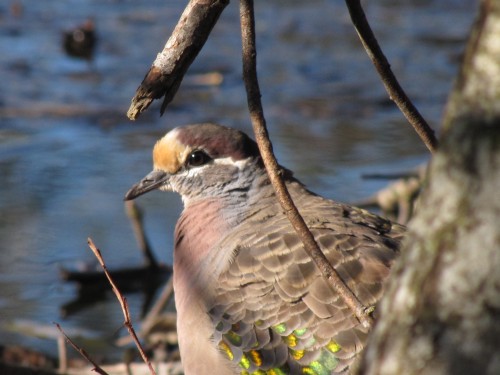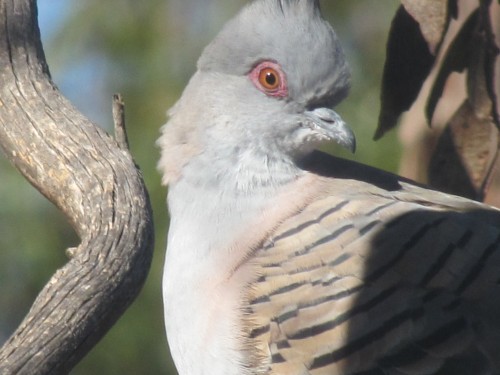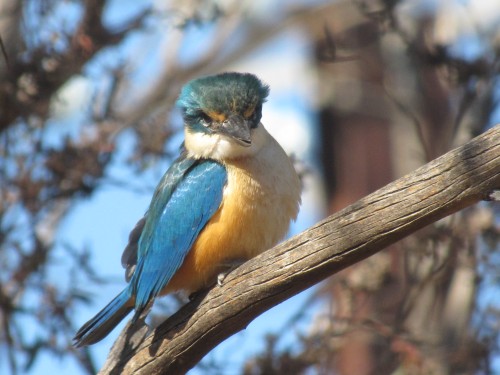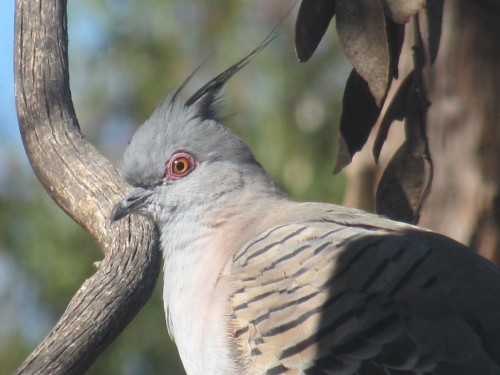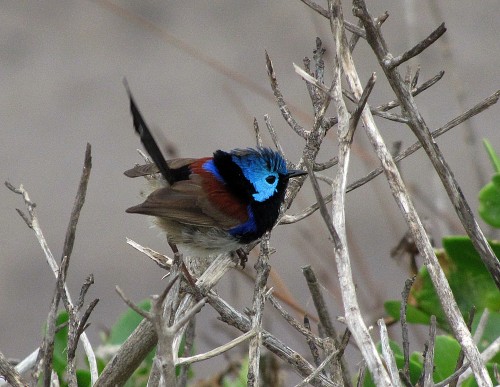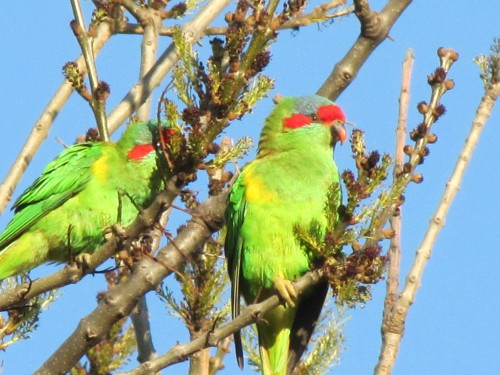Surprising waterbirds of the dry country
Dry Country
I love the dry country we have here in Australia. Most of my birding has been done in areas of Australia which have an average annual rainfall of under 250mm (10 inches). Some of this country is marginal farming country, sometimes cereals, and often sheep and cattle. I grew up on such a farm and still cherish my childhood adventures in the mallee bushland near my home.
On the road again
Earlier this week my wife and I travelled from our home in Murray Bridge, South Australia, to Sydney. We are currently staying with my son and his family. The grandchildren love having us stay with them. At ages 7 and 4 they are already showing an interest in the birds they see in their garden, and in the parks they visit. My interest has rubbed off on them.
Missing out
The car journey from home to Sydney is over 1300km, two long days of driving. In future, we think we might take three or four days to get here, stopping more frequently at the many interesting places along the way. There are many national parks, reserves, botanic gardens and bushland on this route and we just have to drive right on by, often with a groan of despair at what we might be missing.
Hay Plains
One of the places we drive through is the large rural town of Hay, located on the banks of the Murrumbidgee River. The birding along this river can be excellent. But before we get to Hay we have to pass through about 130 kilometres of the Hay Plains, a dry region consisting of few trees, much saltbush and some grassland. I find this drive to be fascinating because it often reveals odd collections of birds. On one trip we saw hundreds of Emus grazing on the low vegetation. On another trip, after heavy rain in that area, we saw thousands of ducks, mostly Australian Wood Duck and Grey Teal. They were taking advantage of the long stretches of water still lying along the edges of the highway.
Surprising Waterbirds
As we travelled along at 110kph my wife suddenly pointed out an interesting sight. It was a gathering of dozens of waterbirds: Australian Pelicans, White Ibis, Straw-necked Ibis and Yellow-billed Spoonbills. Harassing all of them from only several metres overhead was a Swamp Harrier. As we rushed by I didn’t have time to take in the presence of any other birds. I am sure that if we had had the time to stop, I would have recorded several species of ducks, perhaps coots, swamphens, egrets, herons and lapwings, cormorants, and maybe even some crakes and rails.
Irrigation
This was a very surprising collection of birds for what is essentially very dry country. The reason for their presence is explained by the presence of wide irrigation channels. The water is pumped from the nearby Murrumbidgee River into a series of channels, some of which are 5 or more metres wide. The water is then used to either flood irrigate large expanses of land, or pumped through long, overhead sprinkler systems. This area grows large amounts of hay, wheat and cotton, all irrigated from the channels. The fact that this also provides a perfect environment for numerous birds is a pleasant by-product. Further east there are large expanses of fruit orchards as well.
Further reading:
- Australian Pelicans overhead
- White Ibis at Dubbo Zoo
- Straw-necked Ibis Adelaide Zoo
- Yellow-billed Spoonbills and the birth of a birder
Birding is easy
It has a been a long time since I wrote a basic post about birding.
Some years ago I wrote a series of 21 articles called How to be a Birder.
This post is not an update on that series. This is just a heads-up to new readers of this site. I was encouraged to write this in response to an article I recently read here. That article is for American readers. What I have to say is largely for my Australian readers – but the same principles apply nearly worldwide.
Birding is really easy
Birding is quite easy. Just glance out of the window into your garden. Do you see any birds? Perhaps you can see a pigeon or a dove or possibly a sparrow. You’ve just become a birder. One of our common birds here in South Australia is a Crested Pigeon, shown below. (Okay – some of you will know it as a “Top Knot” Pigeon, but strictly speaking, that official name belongs to a bird found in the eastern parts of Australia.)
Binoculars and Bird Baths
I usually keep a cheap pair of binoculars handy where I can get to them quickly. We often spend a good part of the day in our sunroom which overlooks a part of the garden. A large picture window in this room gives us a great view of several bird baths. The binoculars give me a great view of any birds which come for a drink or a bath. Installing a bird bath in your garden, even a small garden, can help to bring the birds closer for you to watch – birds like the honeyeater in the next photo.
Into the garden
A short stroll out into the garden or even down the street can reveal plenty more birds. Keep a watch out for any movement in plants, bushes and up in the branches of any trees growing nearby. Pay special attention to any flowers you see – Australian honeyeaters and parrots love the flowers of both native Australian plants as well as exotic plants. The Noisy Miner shown in the photo below is sure enjoying a feed from a red hot poker flower.
Go for a picnic
Another good way to become a birder and to begin enjoying our birds is to go for a picnic. This could be to a local park, a nearby river, lake or beach or to your nearest botanic gardens. In these places, you are sure to find a good variety of birds, especially if there is a water feature or natural body of water. Becuase such places often have crowds of people, many of the birds will have become quite accustomed to humans and you will be able to get up quite close. Near and in the water you will find ducks, geese, herons, egrets, grebes, coots, moorhens, cormorants and many more that I haven’t listed here.
Although it may be tempting and satisfying, please do not feed the birds. Human food, especially bread, is not suitable for Australian birds. In fact, it can kill them.
Go hiking or camping
Australia has hundreds of National Parks and Reserves in every state. These locations are almost always excellent places to go hiking, having a barbecue or picnic or even camp overnight or for longer. Because these areas are usually natural bushland, the birding can also be wonderful, especially in spring here in Australia when many birds are nesting. Keep on the lookout for birds in the bushes and any vegetation, as well as higher up in the branches of the trees. The photo of a Galah shown below was taken at a wetland area near my home. The wetlands area is actually a sewage installation, beautifully landscaped with many bushes and trees.
Birding while travelling
Warning: keep your eyes on the road and on the traffic all around you!
Yes, I also watch out for the birds I see while travelling. We have relatives and friends in many parts of Australia and visiting them sometimes entails many hours – and sometimes days – of travelling our countryside. As we go along I keep my eyes on the traffic and road conditions, but over many years, I have also become adept at watching out for any birds on the side of the road or flying over the road. Birds of prey like eagles and hawks are common along our country highways, as are ravens, choughs, magpies and currawongs. Sometimes this can be frustrating when it comes to identifying them as we speed by in our car, only getting a brief glimpse of the bird.
From time to time, it is safe to stop and get a closer look at a bird, even getting a photo if I have the camera handy. A few years ago I was driving slowly in an Adelaide street after dropping off my wife at a hospital. I was able to stop safely and quickly and get the photo of a Sulphur-crested Cockatoo which I have shown below. There was a small flock of these lovely birds right there in a suburban street tree.
Birding at night
For some people, this might be a little difficult, depending on the environment surrounding their home. It possibly wouldn’t work if you live in a high-rise apartment in the heart of a city. On the other hand, we live on the edge of a large country town with plenty of natural and planted scrub all around. We quite often switch off the television at night; there’s often nothing worth watching anyway.
The area around our home is often very quiet with very little traffic. On these occasions, we occasionally hear nocturnal birds such as owls, frogmouths or nightjars calling. The Southern Boobook Owl shown below was photographed in our garden some years ago.
Birding while commuting
One way of usefully using the time spent commuting is to do some casual birding from the bus, tram or train. I haven’t done this much in my life because I always drove a car to work. To illustrate my point, we recently did a bus tour of Morocco. Wonderful country. Along the way I was able to see quite a few birds while travelling along, even getting the occasional photo, such as the egret shown below, taken from the bus. On the other hand, travelling at 300 kph in the high-speed trains in Spain is just a little too fast to be watching out for any birds. Exhilarating, yes, but difficult.
More unusual birding places
In Bed: I like lingering in bed some mornings, trying to identify the bird calls outside without actually seeing them. This is particularly enjoyable when out bush camping, or in our caravan.
In church: I must confess that I have taken notice of birds while sitting in church. Our church has several windows which give me a good, but limited, view outside. Not getting distracted from the sermon can be a challenge.
At a funeral: Again, I confess to sometimes being distracted by birds at a funeral, especially during the committal if this is held outdoors. I refrain from taking my camera or binoculars on such occasions. The same applies to when I am in church.
In a plane: It is possible to see some high flying birds from planes, but I am talking about birds seen on the tarmac while waiting for the plane to leave, or while taxiing on the runway. I managed to see birds from the window of a plane in Adelaide, Kuala Lumpur, Dubai and Addis Ababa. Now if you add birds seen from the terminal while waiting for a flight, the list gets longer.
On a canoe, boat or ship: I have watched birds from my canoe on many occasions. I have also taken many photos from a friend’s boat on a nearby lake (see the pelican below). I even did some birding while travelling on a ship (ferry) from Morocco to Spain.
In hospital: Thankfully, I have only been in hospital on a handful of occasions. I have, however, visited people in hospital. Whenever there is a suitable window with a garden outside, there is always the potential to even be a birder while recuperating in bed.
How about you?
- Over to my readers; where do you like to go birding?
- What unusual places have you been birding?
- Leave a comment or two; I would really appreciate that.
Good birding,
Trevor
Postscript: In a restaurant: we stayed in a beautiful riad in Marrakech, Morocco. Because it was open to the sky, the birds were free to fly into the restaurant area. The owners even put out seed to attract them. See the photos below.
Australasian Shoveler at Dubbo Zoo
On our visit last year to Dubbo Zoo in western New South Wales (Western Plains Zoo) we stopped to have lunch by a wetland next to the road which takes one through the zoo. On this swamp there were a few ducks, other waterbirds and many White Ibis, some nesting.
Two of the ducks in particular took my attention – a male and female Australasian Shoveler (also called Southern Shoveler). This is a species I have not seen very often and I only have a handful of photos worth showing here.
The Australasian Shoveler is found throughout the eastern parts of Australia, and is also present in south west Western Australia and in Tasmania. They are nomadic according to seasonal conditions and the presence of water. Their preferred habitats include lakes and other large bodies of water, either fresh or saline, swamps, wetlands, sewage ponds and flood waters.
While I concede that I haven’t observed this species on many occasions, in my experience they tend to be found singly, in pairs or small flocks, but never in great numbers. I stand to be corrected on this if I am wrong. This is also a rather timid species and is not easy to approach for photography. With the large number of daily visitors to the Dubbo Zoo is guess these birds have become used to people with cameras. I was able to get to within about 20 metres for these photos.
Further reading:
A close encounter
Quite frequently I have close encounters with our bird life, especially those which are resident in our garden and on our five acre block on the outskirts of Murray Bridge in South Australia. Sometimes I have the camera with me, sometimes I have to race off and get the camera. And then… there are those occasions when the bird flies off immediately.
Yesterday morning I was just finishing having breakfast, reading the daily paper and doing the cryptic crossword (yes, I solved it). I just looked up to check the bird bath – the one shown in the photo above – when a White-plumed Honeyeater landed on the window sill less than 50cm from where it was sitting. After staying for all of 5 seconds it flew off. No time to get the camera.
Then this morning the same thing happened, but this time a small movement on my part sent the bird flying off without actually landing.
Mmm… that makes me think. I wonder if this particular bird is coming to the window on a regular basis? I wouldn’t be surprised if it was coming to snaffle an insect or a spider lurking around the window frame. Or perhaps it was after some spider’s web to softly line a new nest?
(Embarrassed silence.)
I probably – no definitely – need to clear all the spiders’ webs around the house – but then, I am trying to be ‘bird friendly’. (Notice how I neatly side-stepped doing some house maintenance?)
For more articles about my close encounters with birds click here.
I have included a few more photos of close encounters with birds below.
Happy 10th Birthday to Trevor’s Birding
Happy Birthday to Trevor’s Birding.
10 years old today.
Goodness, how the years have flown since my very first post on this site. That was actually on a different platform and has been updated several times over the years.
A few statistics
- A total of 1668 articles about birds and birding
- Well over 5300 comments from my readers
- Several thousand photos shown
- Visitors from over 200 countries and territories
- Over a million pageviews from well over half a million visitors
Travels
Wherever I travel I take my camera, binoculars, notebook and field guide and fit in times of birding (bird watching) and bird photography whenever I can. On many occasions I also go out and about near my home for the deliberate purpose of birding. On my return home I then enjoy writing on this site about the birds I have seen and sharing the best of my photos. Some of these travels take me to other states in Australia as well, especially when we visit family in Sydney, and friends in other places.
Archives
Some of my readers may not be aware of the many hundreds of articles in my archives – 1668 articles to be precise – and growing every few days with new articles. These can be accessed via the button at the top of each page and range from the most recent to the very first article. Here is a treasure trove of writing about birds.
Contents
Another way of accessing articles on specific areas of interest is via the Contents on the side bar, including
- How to be a birder
- Glossary of Bird Words – to help my readers understand any jargon used here (and it needs some editing – as well as be completed)
- Favourite Birding Spots – some of my favourite places to go birding (and it needs some serious updating!)
- Great birding moments – those special times when I saw a special bird, or got a lovely photo
Categories and search
Another way of searching for specific information on this site it to use the search facility (in the top right hand corner of each page). Just type in what you are looking for – you might be surprised what comes up. The categories section on the sidebar is another area where you can search for articles on a particular species or topic. If all that doesn’t work, try the contact form – also at the top of each page. Send your questions to me via email and I will reply as soon as I can, noting that there will be a delay if I am busy out birding and away from my computer.
Comments
Every article has a comments section and I would love to have many more. The 5300 comments so far are just the beginning. Just remember that they are moderated, and I reserve the right not to accept, or delete, or even edit comments, so keep them civil and in good taste. Children often read the articles here.
Photos
Over the years I have shared many photos here, with many more to come. Today, however, I decided to share a few of my favourite ones (see below).
Enjoy.
And keep coming back for more.
Good birding.
Trevor
Further reading:
- My first blog post
- Archives – you can access the complete list of articles on this site here or via the button at the top.
